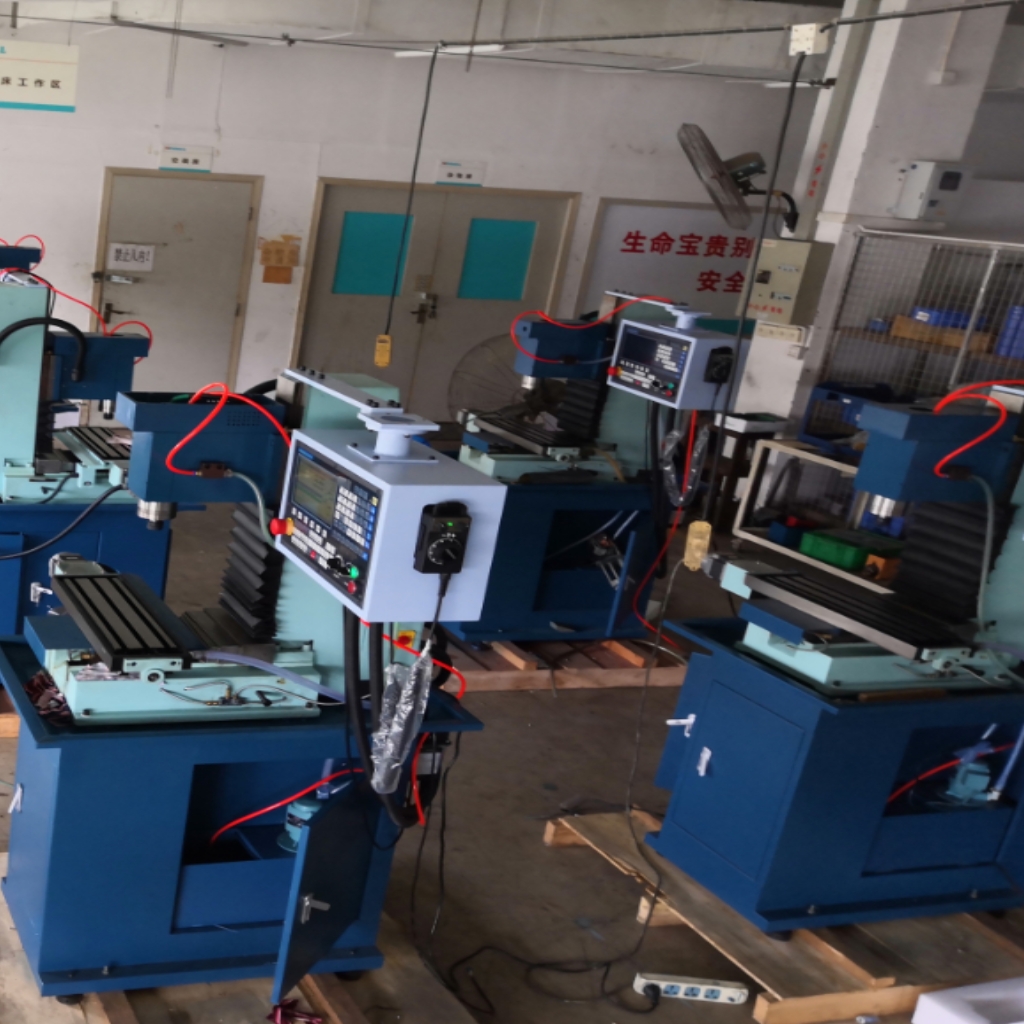Blog
Xendoll has 22 years of experience in the production of small machine tools. We will help you choose the suitable machine and share our experience in CNC machining with you.
 Oct 14, 2025
Oct 14, 2025

 392
392
Cutting metal is a fundamental skill for anyone involved in machining, fabrication, or DIY projects. Whether you're a seasoned mechanical processing enthusiast or an educator training the next generation of engineers, understanding the right method for the job is crucial. The process can range from simple manual cuts to complex, precision machining. The key to success lies in selecting the appropriate technique and tools for the type of metal, the desired precision, and the scale of your project. This guide will walk you through the most effective methods for cutting metal, emphasizing safety and precision, and highlight how modern mini machine tools have revolutionized small-scale metalworking.

Before making the first cut, it's vital to understand that not all metals or projects are the same. Cutting a thin sheet of aluminum requires a different approach than cutting a solid steel bar. The primary methods can be categorized into manual cutting, power tool cutting, and machining.
1. Manual Cutting Methods
For quick, rough cuts or situations where power is unavailable, manual tools are indispensable.
Hacksaw: The classic tool for cutting metal bars, pipes, and profiles. Success depends on using a blade with the correct teeth-per-inch (TPI) – more TPI for harder, thinner metals; fewer TPI for softer, thicker stocks. A steady hand and proper clamping are essential for a straight cut.
Tin Snips: Functioning like heavy-duty scissors, tin snips are perfect for cutting thin sheet metal. They come in straight-cut, left-cut, and right-cut varieties to help you navigate curves easily without straining your hands.
2. Power Tool Cutting Methods
For faster and less labor-intensive work, power tools are the go-to choice.
Angle Grinder: Equipped with a cut-off wheel, an angle grinder is incredibly versatile for cutting through bolts, bars, and even sheet metal. It's a powerful tool that requires strict safety measures, including a face shield and gloves, due to the high speed and hot sparks it generates.
Bandsaw: A bandsaw is a workhorse for making straight, accurate cuts in metal stock. A portable benchtop bandsaw is ideal for hobbyists, allowing for straight and mitered cuts with excellent control and a clean finish.
Jigsaw: With a metal-cutting blade, a jigsaw can make curved or straight cuts in sheet metal. It’s less effective on very thick materials but offers great flexibility for intricate shapes.
For tasks that demand high accuracy, repeatability, and a superior surface finish, nothing beats machining. This is where the capabilities of mini machine tools, like those from Xendoll, truly shine. These compact yet powerful machines bring industrial-level precision to your workshop, making them perfect for detailed projects, prototyping, and educational environments.
Mini Lathe: A mini lathe is essential for cylindrical cutting operations. It's used for facing, turning, drilling, and threading. By rotating the metal workpiece against a stationary cutting tool, a lathe can create precisely dimensioned parts with smooth finishes. It is perfect for creating shafts, bushings, and other cylindrical components.
Mini Milling Machine: The milling machine is the ultimate tool for complex and multi-axis cutting. A mini mill moves a rotating cutter across a stationary workpiece, allowing you to create slots, pockets, flats, and intricate 3D contours. For mechanical processing enthusiasts, this opens up possibilities for building engines, model parts, and custom tools with incredible accuracy.
CNC Technology: Many modern mini mills and lathes are CNC-compatible or come as full CNC machines. Computer Numerical Control (CNC) automates the cutting process, allowing for the mass production of identical parts or the creation of highly complex geometries that would be nearly impossible to achieve by hand. This is an invaluable feature for small-batch production and advanced educational training in automation and design.
Regardless of the method you choose, following these core principles will ensure better results and a safer working environment.
Safety First: Always wear appropriate Personal Protective Equipment (PPE). This includes safety glasses or a face shield, hearing protection when using loud power tools, and gloves to protect against sharp edges. Secure your workpiece firmly in a vise or with clamps to prevent movement.
Choose the Right Cutting Tool/Bit: Using a blade or bit designed for metal is non-negotiable. For machining, select the correct tool steel (like HSS or Carbide) and geometry for the specific metal you are cutting.
Use Lubrication and Coolant: Especially in machining operations, using cutting fluid is critical. It reduces heat, extends tool life, and improves the surface finish by washing away metal chips.
Measure Twice, Cut Once: This timeless adage holds true. Take your time to mark your cut lines clearly with a scribe and center punch. Double-check your measurements and machine settings before proceeding.

Knowing how to cut metal effectively opens up a world of creation and repair. From the basic control of a hacksaw to the raw power of an angle grinder, and finally, to the refined precision of a mini lathe or milling machine, each tool has its place in a well-equipped workshop. For mechanical, educators, and small-scale manufacturers, investing in versatile and reliable mini machine tools from Xendoll is the key to unlocking higher levels of craftsmanship, innovation, and efficiency. By matching the right technique to your project and prioritizing safety, you can tackle any metal-cutting challenge with confidence. Visit xendolltools.com to explore our range of precision tools designed to empower your next great build.



 Show all our samples
Show all our samples
 Provide you with a free quote
Provide you with a free quote
 Answer all the questions you may have
Answer all the questions you may have
 Guided installation and other options
Guided installation and other options